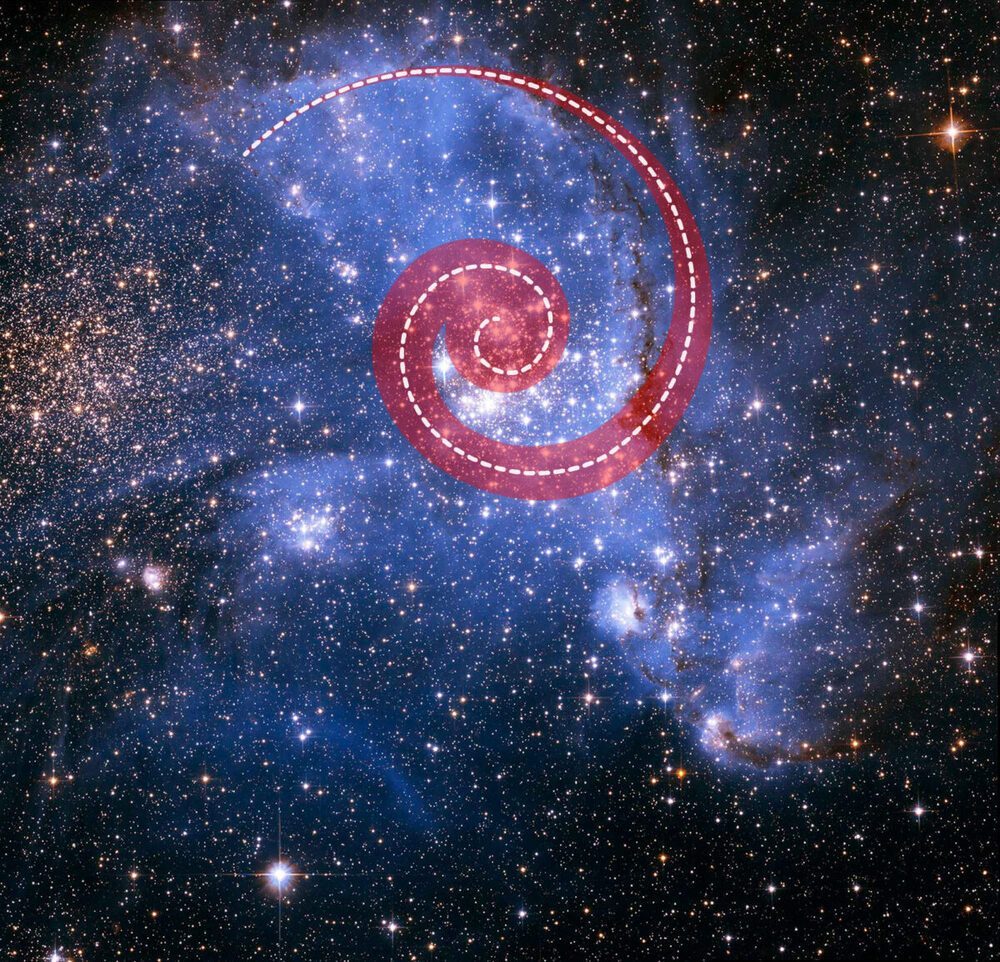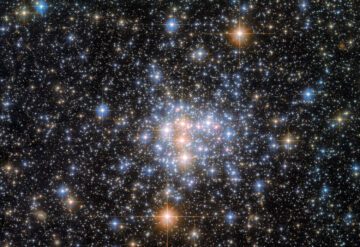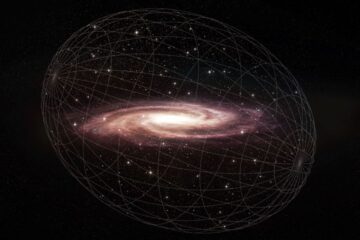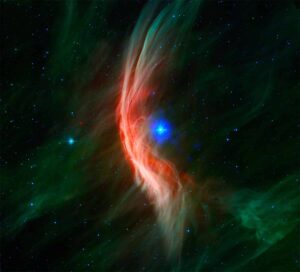NASA’s Hubble detected young stars spiraling into the center of a massive cluster of stars in the Small Magellanic Cloud. The outer arm of the spiral in this huge, oddly shaped stellar nursery called NGC 346 may be feeding star formation in a river-like motion of gas and stars.
The chemical composition of the Small Magellanic Cloud is simpler than Milky Way. It is similar to galaxies in the younger universe, where heavier elements are more scarce. Because of this, the stars in the Small Magellanic Cloud burn hotter and run out of fuel faster than in our Milky Way.
Understanding how stars form in the Small Magellanic Cloud provides a fresh perspective on how a starburst may have occurred early in the universe’s history.
The new study suggests that star formation in Small Magellanic Cloud is similar to that in our own Milky Way.
NGC 346 has a diameter of 150 light-years. It has a mass of 50,000 Suns. Astronomers, until now, were puzzled by its intriguing shape and rapid star formation rate. To disclose the behavior of this mystery, they used data from NASA’s Hubble Space Telescope and the European Southern Observatory’s Very Large Telescope (VLT).
Study leader Elena Sabbi of the Space Telescope Science Institute in Baltimore said, “Stars are the machines that sculpt the universe. Without stars, we would not have life, yet we don’t fully understand how they form. We have several models that make predictions, and some of these predictions are contradictory. We want to determine what is regulating the process of star formation because these are the laws that we also need to understand what we see in the early universe.”
Scientists observed the motion of the stars in NGC 346 in two different ways:
1. They used Hubble to measure the changes in the stars’ positions over 11 years. The stars in this region are moving at an average velocity of 2,000 miles per hour, which means that in 11 years, they will move 200 million miles.
2. Using the ground-based VLT’s Multi Unit Spectroscopic Explorer (MUSE) instrument, they measured radial velocity, determining whether an object is approaching or receding from an observer.
Zeidler said, “What was amazing is that we used two completely different methods with different facilities and came to the same conclusion, independent of each other. With Hubble, you can see the stars, but with MUSE we can also see the gas motion in the third dimension, and it confirms the theory that everything is spiraling inwards.”
Sabbi said, “The Hubble archive is a gold mine. There are so many interesting star-forming regions that Hubble has observed over the years. Given that Hubble is performing so well, we can actually repeat these observations. This can really advance our understanding of star formation.”
Journal Reference:
- Peter Zeidler, Elena Sabbi, and Antonella Nota. The Internal Line-of-Sight Kinematics of NGC 346: The Rotation of the Core Region. 2022 The Astrophysical Journal. DOI: 10.3847/1538-4357/ac8004













